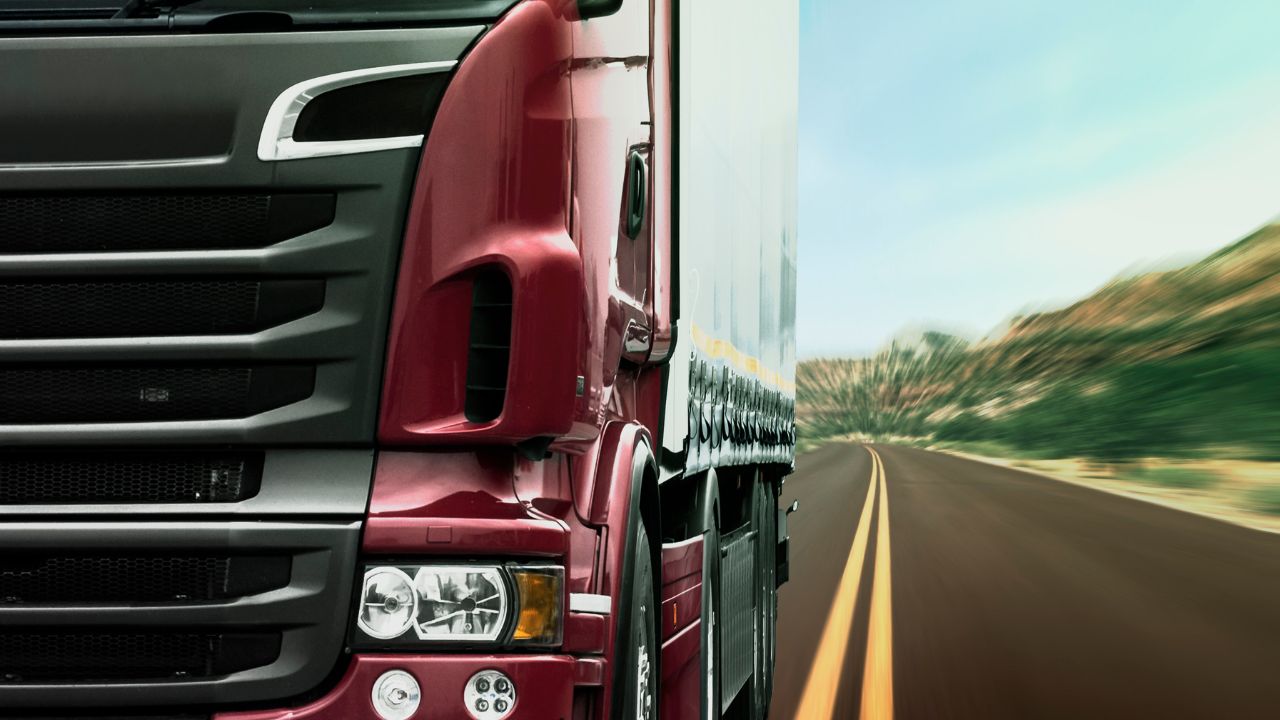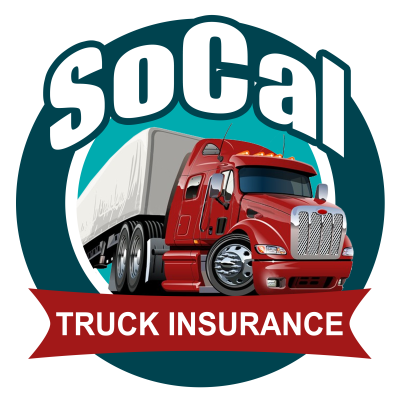
Key Takeaways
Liability insuranceCoverage that protects against claims resulting from injuries and damage to people and/or property. protects you when your truck causes harm to others. Unlike physical damage coverageOften bundled with NTL, this covers damage to the truck itself when not in commercial use. that pays for your own vehicle repairs, liability coverage handles third-party claims when you're at fault in an automobile accident. The Federal Motor CarrierA company that provides transportation services for transporting goods via motor vehicles such as tr... Safety Administration mandates minimum liability coverage for all commercial trucks, making it the cornerstone of any truck insurance policyA contract between an insurance company and the policyholder, which outlines the terms under which t... breakdown. At Socal Truck Insurance, we help carriers understand the liability vs physical damage insurance truck distinction to build compliant, cost-effective insurance policies.
Compare liability and physical damage insurance coverage to understand what each protects and when you need them. Learn how liability covers damages to others, while physical damage protects your own vehicle from accidents, theft, or disasters—helping you choose the right protection for your car and budget.
Auto liability insurance covers three essential areas: bodily injury liabilityCovers costs related to injuries that the policyholder's business causes to someone else, including ... (medical costs for injured third parties), property damage liabilityProvides protection against damage your business operations may cause to another person's property. (repairs to others' vehicles or property), and environmental cleanupCoverage for the cost associated with the removal of pollution caused by a spill or accident, includ... costs from cargo spills. The Federal Motor CarrierThe entity that physically transports the freight from one location to another, hired by a freight b... Safety Administration sets minimum coverage based on your commodity type and vehicle weight.
Federal Minimums by Commodity/Vehicle Type (49 CFR § 387.9):
| Commodity/Vehicle Type | Minimum Liability Coverage |
| General freight (10,001+ lbs GVWR) | $750,000 |
| Cargo vans/vehicles <10,001 lbs GVWR (non-hazmat) | $300,000 |
| HazmatHazardous materials as classified by the government. Freight brokers dealing with hazmat shipments m... (non-bulk) | $1,000,000 |
| Hazmat (bulk Division 2.1/2.2 gases) | $5,000,000 |
Most shippers require $1M-$2M liability coverage in their contracts—well above federal minimums. Your insurance agent will verify these requirements during the policy periodThe duration for which an insurance policy provides coverage, from the effective start date to the e.... The MCS-90 endorsementAn endorsement required by the FMCSA that guarantees the availability of funds for public liability ... is mandatory for interstate carriers, ensuring insurance companies pay third-party claims even if policy violations occur. This third-party liability insurance protects the public first, though carriers remain liable for out-of-pocket costs if fraud voids the policy.
Commercial truck insurance costs reached $0.102 per mile in 2024—a 47% increase from $0.059 per mile in 2014 (ATRI, July 2025). Q1 2025 data shows insurance premiums rising 5.8% year-over-year, driven primarily by nuclear verdicts in the insurance industry. Small fleets pay more than three times as much as very large fleets on a per-mile basis due to limited risk managementThe process of identifying, assessing, and controlling threats to an organization's capital and earn... resources and claims handling leverageThe use of borrowed capital to increase the potential return of an investment, which also increases ....
Nuclear verdicts—jury awards exceeding $10 million—jumped from 33 in 2020 to 135 in 2024. The median verdict hit $44M in 2023, up from $21M in 2020. These catastrophic third-party claims force insurance companies to raise premiums across all carriers, even those with clean records. At Socal Truck Insurance, we use quote comparison tools to find competitive rates while maintaining state-required liability coverage and proper protection plans for your operation.
Physical damage coverage protects your own trucks from repair and replacement costs. While liability coverage handles third-party claims, physical damage insurance is a first-party claimA formal request by a policyholder to an insurance company for coverage or compensation for a covere... benefit that pays for vehicle repairs to your equipment. This commercial insurance coverage comparison shows the key difference: liability vs physical damage insurance truck policies serve opposite purposes. At Socal Truck Insurance, we help carriers evaluate when physical damage truck insurance makes financial sense based on vehicle value, auto loan requirements, and net worth considerations.
A Physical Damage Auto Policy includes two main components. Comprehensive insurance covers non-collision perils: theft, fire, vandalism, weather events, and animal strikes. Collision insurance handles damage from automobile accidents, rollovers, and jackknifes. Together, these form complete physical damage coverage for your fleet.
Insurance premiums for physical damage typically run 1.7-4% of your truck's stated amountThe maximum amount an insurer will pay for a loss, based on the value of the vehicle as agreed upon ... annually. A $100K truck at 2.5% costs $2,500/year. Standard deductiblesA specified amount of money that the insured must pay before an insurance company will pay a claim. range from $1,000-$2,500, with out-of-pocket costs paid before insurance companies cover damage costs. High deductibles ($5,000-$10,000) cut insurance premiums 15-25% but require stronger risk management and cash reserves. Unlike liability coverage mandated by the Federal Motor Carrier Safety Administration, physical damage coverage isn't federally required—but lenders demand it for any auto loan or vehicle lease during the policy period.
Stated Amount coverage under a physical damage contract pays the lesser of your stated amount or actual cash value (ACV)The value of the vehicle at the time of damage or loss, calculated by taking the replacement cost mi... at loss. Many carriers misunderstand this protection plan structure. If you state a 2020 Peterbilt's value at $60K but its ACV is $70K at a loss, insurance companies pay only $60K—not the higher market valueThe current value of a vehicle in the open market, which may differ from the actual cash value or re.... Overstating adds administrative fees without increasing payouts; understating caps your recoveryThe amount recovered by an insurance company from a third party responsible for causing damage to th... below replacement costThe amount it would take to replace the damaged or stolen vehicle with a similar one without deducti....
Gap insurance fills the critical space between ACV payouts and auto loan balances, costing $200-$800/year per truck. Consider this: you purchase a 2024 Freightliner for $150K with a $135K loan. After 12 months, your loan balance sits at $120K but ACV drops to $110K. Without gap insurance, you owe lenders $10K out-of-pocket after a total loss. SoCal Truck Insurance includes gap coverageInsurance that covers the difference between the actual cash value of the vehicle and the remaining ... analysis in every quote comparison tool session for financed units, protecting your net worth when depreciationThe reduction in value of property due to wear and tear or age, which can affect the amount an insur... outpaces loan amortizationThe process of gradually writing off the initial cost of an asset over a period, similar to deprecia....
Understanding the liability vs physical damage insurance truck distinction is essential for building proper commercial insurance coverage. These insurance policies serve opposite functions in your truck insurance policy breakdown. Liability coverage protects others through third-party claims, while physical damage insurance protects your own assets through first-party claims. The Federal Motor Carrier Safety Administration mandates liability but leaves physical damage optional—unless your auto loan agreement requires it. At Socal Truck Insurance, our insurance agents help carriers balance state insurance laws with lender requirements during the policy period.
Commercial Insurance Coverage Comparison:
| Factor | Liability Insurance | Physical Damage Coverage |
| Who's Protected | Third parties (other people/property) | Your own vehicles |
| What It Pays | Bodily injury liability, property damageInsurance coverage that pertains to damage or destruction of buildings, vehicles, and other physical... liability, and environmental cleanup | Vehicle repairs, replacement costs, theft, and collision damage |
| Legal Requirement | Yes (federal minimum $750K general freight) | No (unless lender-required for auto loan) |
| Typical Cost | $0.102 per mile (2024) | 1.7-4% of vehicle value annually |
The cost structures differ fundamentally. Liability insurance premiums scale with mileage and exposureThe extent to which the truck is at risk of encountering an insurable incident while not under dispa..., while physical damage insurance premiums tie directly to vehicle value. Insurance companies price collision coveragePart of physical damage insurance that covers damage to a truck from a collision with another vehicl... and comprehensive coverageProtects against damages to a truck from non-collision-related incidents such as theft, fire, vandal... based on stated amount, not operational miles. This makes physical damage truck insurance more predictable but potentially unnecessary for older, fully-owned equipment. Your insurance agent should run a quote comparison tool covering both coverage types to identify the optimal truck insurance policy breakdown for your fleet's risk profile and financial position.
Selecting the right commercial insurance coverage depends on vehicle age, financing status, and net worth. Every carrier needs liability coverage—it's federally mandated. Physical damage coverage is optional but critical for protecting high-value assets and satisfying auto loan requirements. At Socal Truck Insurance, our insurance agents analyze your truck insurance policy breakdown to balance protection plans with insurance premiums, ensuring you avoid both over-insurance and dangerous gaps in coverage.
Vehicle age and loan status determine your physical damage insurance needs. Insurance companies tier pricing based on equipment age, with newer trucks qualifying for comprehensive insurance and collision insurance at preferred rates. Financed equipment requires full physical damage coverage during the policy period.
Physical Damage Coverage by Vehicle Age:
| Vehicle Age | Recommendation | Rationale |
| 0-3 years | Comprehensive + Collision (always) | Preferred tier pricing; high assetAny resource owned by an individual or a business that is expected to provide future economic benefi... value justifies insurance premiums |
| 4-7 years | Comprehensive + Collision (if >$30K value) | Standard tier; case-by-case, based on replacement cost vs. premiumThe amount paid by the insured to the insurance company in exchange for insurance coverage, typicall... |
| 8-10 years | Liability only (unless financed) | Limited market; damage costs may exceed vehicle value |
| 11+ years | Liability only | Not economical; self-insure vehicle repairs |
Financed/Leased Vehicles: Your lender MUST have comprehensive coverage, collision coverage, and gap insurance if the loan-to-value exceeds 80%. This protects their collateral during the auto loan or vehicle lease period. Failure to maintain coverage triggers defaultFailure to meet the legal obligations (or conditions) of a loan, such as not making the regular prin... clauses and forced-place insurance at triple the cost.
Owned Outright: Worth >$30K: Physical damage truck insurance recommended. One automobile accident totaling your truck means absorbing full replacement costs—a risk management failure most carriers can't afford. Worth <$30K: Consider liability-only. Self-insuring physical damage may cost less than annual insurance premiums over a 3-5 year policy period.
Even experienced carriers make costly errors in their truck insurance policy breakdown. These mistakes increase out-of-pocket costs and create gaps during claims handling. Socal Truck Insurance's quote comparison tool identifies these issues before they become problems:
Don't navigate the liability vs physical damage insurance truck decision alone. Socal Truck Insurance's experienced insurance agents use our quote comparison tool to find competitive insurance premiums while ensuring your truck insurance policy breakdown meets Federal Motor Carrier Safety Administration requirements and lender obligations. Whether you need liability coverage for a single truck or comprehensive protection plans for an entire fleet, we deliver clear answers and cost-effective insurance policies.
Contact Socal Truck Insurance today for a free commercial insurance coverage comparison and discover how proper risk management protects your business and your bottom line.
